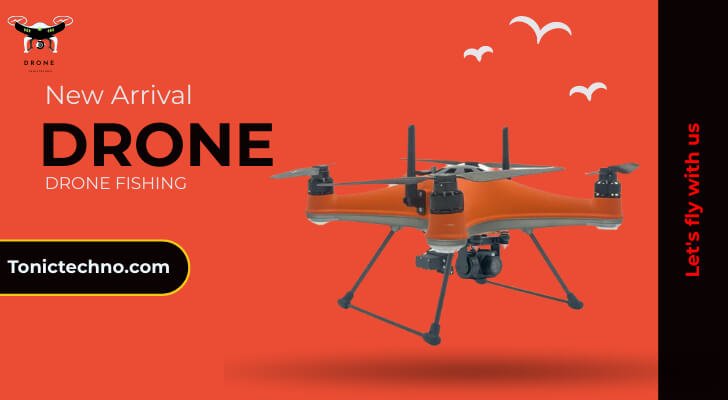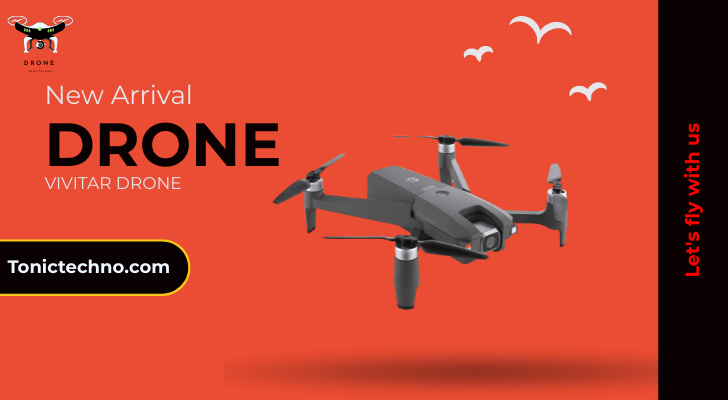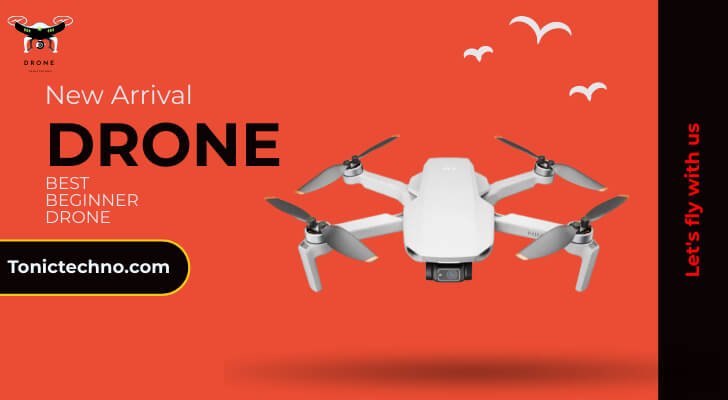Drone fishing is a revolutionary way to enhance your fishing experience. It combines the thrill of fishing with the cutting-edge technology of drones, allowing you to reach areas that were once difficult or impossible to access. With the ability to scout locations, carry bait, and even capture footage from above, drone fishing opens up a new world of possibilities for enthusiasts. In this guide, we’ll explore what drone fishing is, the gear you need, tips for success, and how to choose the best drone for fishing.

What is Drone Fishing?
Drone fishing involves using a drone to aid in fishing activities. The drone is equipped with a payload release system that allows it to drop bait into the water at a desired location. It also offers an aerial view of the fishing area, helping anglers locate fish more efficiently. Using drones, fishermen can cover large areas of water without casting their lines from the shore or a boat. This innovative method of fishing can significantly increase efficiency, especially in hard-to-reach locations.
Unlike traditional fishing, where you rely on your skills and instincts, drones provide a high-tech approach that combines technology with the excitement of fishing. They help you scout large bodies of water, identify fish schools, and even allow you to fish from a distance while controlling the drone remotely.
Types of Drones Used for Fishing
There are various types of drones used for fishing, and the one you choose depends on your needs and budget. Let’s look at some popular types and their features:
- Quadcopters: Quadcopters are the most common type of drone used for fishing. These drones have four propellers and offer excellent stability in the air. They are typically used for light fishing tasks and are ideal for catching smaller fish or scouting locations. Popular models include the DJI Phantom 4 and the DJI Mavic series.
- Octocopters: With their eight propellers, octocopters are more stable and robust than quadcopters. They can carry heavier payloads, making them suitable for larger bait and more advanced fishing needs. Professional anglers or those who fish in more demanding conditions often use these drones.
- Hydro Drones: Some specialized drones are designed specifically for use in and around water. These drones have waterproof features, allowing them to withstand splashes and land on water surfaces. They are great for use in marine environments where traditional drones might struggle.
- When choosing a drone, consider its payload capacity, flight time, and stability, as these factors will influence the success of your drone fishing experience.
Drone Fishing Gear and Setup
Drone fishing requires more than just a drone. To have a successful fishing experience, you need a few essential accessories and gear. Let’s break it down:
- Drone: Choose a drone with a solid flight time (at least 20-30 minutes) and a stable camera for scouting. The drone should also have a release mechanism for the bait.
- Payload Release System: This system allows the drone to carry and drop the bait into the water. The release mechanism can be a simple hook that detaches when triggered or a more advanced system controlled via the drone’s remote.
- Fishing Line and Bait: You’ll need a fishing line, hooks, and bait appropriate for your target fish. The drone will carry the bait and drop it in the water at the optimal location.
- Remote Control: A high-quality remote control is essential for flying the drone and releasing the bait accurately. Many drone controllers come with a built-in screen for easy navigation.
- Battery: Drones for fishing require potent batteries that can withstand long flights and heavy payloads. Ensure extra batteries are on hand, as fishing sessions may last longer than the drone’s flight time.
Setting Up Your Drone for Fishing
- Attach the payload release system to the drone.
- Load the fishing line and bait onto the release mechanism.
- Calibrate the drone’s camera and GPS for optimal positioning.
- Ensure the drone’s battery is fully charged and ready for the flight.
- Test the drone’s flight stability and release system before heading out.
Benefits of Drone Fishing
Drone fishing offers numerous advantages over traditional fishing techniques. Here are some of the key benefits:
- Increased Reach: Drones can fly over large bodies of water and scout areas that would otherwise be hard to access. This means you can fish in deeper waters or remote locations where casting a line manually would be difficult.
- Better Fish Location: Drones provide an aerial view, allowing you to locate schools of fish quickly. You can spot fish in shallow areas or deeper regions, making it easier to target specific spots for optimal catches.
- Less Physical Effort: You can avoid the physical strain of paddling a boat or wading through the water with drone fishing. The drone does all the heavy lifting, carrying the bait to the right spot.
- Record and Share Your Experience: Many drones come equipped with cameras, allowing you to capture stunning footage of your fishing experience. You can share this footage with friends or use it to document your fishing adventures.
Tips for Successful Drone Fishing
To make the most of your drone fishing experience, here are some helpful tips:
- Choose the Right Location: Before launching your drone, research the water body you plan to fish in. Look for areas with good fish populations and favourable fishing conditions.
- Check the Weather: Windy or rainy conditions can negatively affect drone stability. Always check the weather forecast before heading out to ensure safe flying conditions.
- Use the Right Bait: The type of bait you use will depend on the fish species you’re targeting. Ensure the bait suits the area and the fish you want to catch.
- Avoid Overloading the Drone: Overloading the drone with too much weight can impact its flight time and stability. Keep the payload within the recommended weight limit to ensure smooth operations.
- Practice Flying the Drone: If you’re new to flying drones, it’s essential to practice in an open space before using them for fishing. You must learn to control the drone, release the bait, and return it safely.
Safety and Regulations in Drone Fishing
Drone fishing is regulated in many areas, so it’s important to know local laws and safety guidelines. Here are some key points to keep in mind:
- Follow Local Regulations: Many countries have strict rules for flying drones, especially in protected areas. Check with local authorities to comply with all drone flying and fishing regulations.
- Respect Wildlife: Drones can disturb wildlife, so be mindful of where and when you fly. Avoid using drones in areas with endangered species or where wildlife may be sensitive to noise.
- Safe Drone Operation: Continuously operate your drone in an open area, away from people and obstacles. Practice flying at lower altitudes and use the drone’s built-in safety features to prevent accidents.
- Respect Fishing Guidelines: Ensure your drone fishing activities do not interfere with traditional anglers or violate fishing laws. Be respectful of fishing zones and avoid disrupting public fishing spots.
Best Drones for Fishing
Various drones are available, each offering unique features that cater to different fishing needs. Here are some of the best drones for fishing:
- DJI Phantom 4: The DJI Phantom 4 is one of the top choices for drone fishing. Its long battery life, excellent camera, and stable flight performance make it ideal for scouting and bait delivery.
- DJI Mavic 2 Pro: With its compact design and superior camera quality, the DJI Mavic 2 Pro is perfect for fishermen needing stability and high-resolution footage. It’s also great for easy portability.
- SwellPro Splash Drone 3: This waterproof drone is built specifically for fishing. It offers easy bait release and water-landing capabilities. It’s durable, reliable, and made for marine environments.
- Autel Robotics EVO II: The Autel EVO II provides excellent range, camera quality, and flight time, making it a solid choice for drone fishing. It’s perfect for anglers who need more advanced features.
FAQ
Can drones be used for all types of fishing?
Drones can be used for freshwater and saltwater fishing, though some models are better suited for marine environments.
How far can a drone fly while fishing?
The range of drones for fishing varies, but most have a flight range between 3 to 10 kilometres.
Is drone fishing legal?
Drone fishing is legal in many areas, but regulations vary by country or region. Always check with local authorities before using a drone for fishing.
How much does drone fishing gear cost?
The cost of drone fishing gear can range from $500 to $2,000, depending on the quality of the drone and accessories.
Are drones good for catching big fish?
Yes, drones can carry larger baits, which can attract big fish. However, the drone’s payload capacity must be considered.
Conclusion
Drone fishing is a modern, exciting fishing method that combines technology with the outdoors. It offers numerous benefits, such as increased reach, better fish location, and less physical effort. With the right drone, gear, and tips, you can enhance your fishing experience and reach areas that traditional methods simply can’t. Always follow local regulations and safety guidelines to provide a safe and enjoyable experience. Whether you’re an experienced angler or just starting, drone fishing is a great way to take your fishing adventures to the next level!


